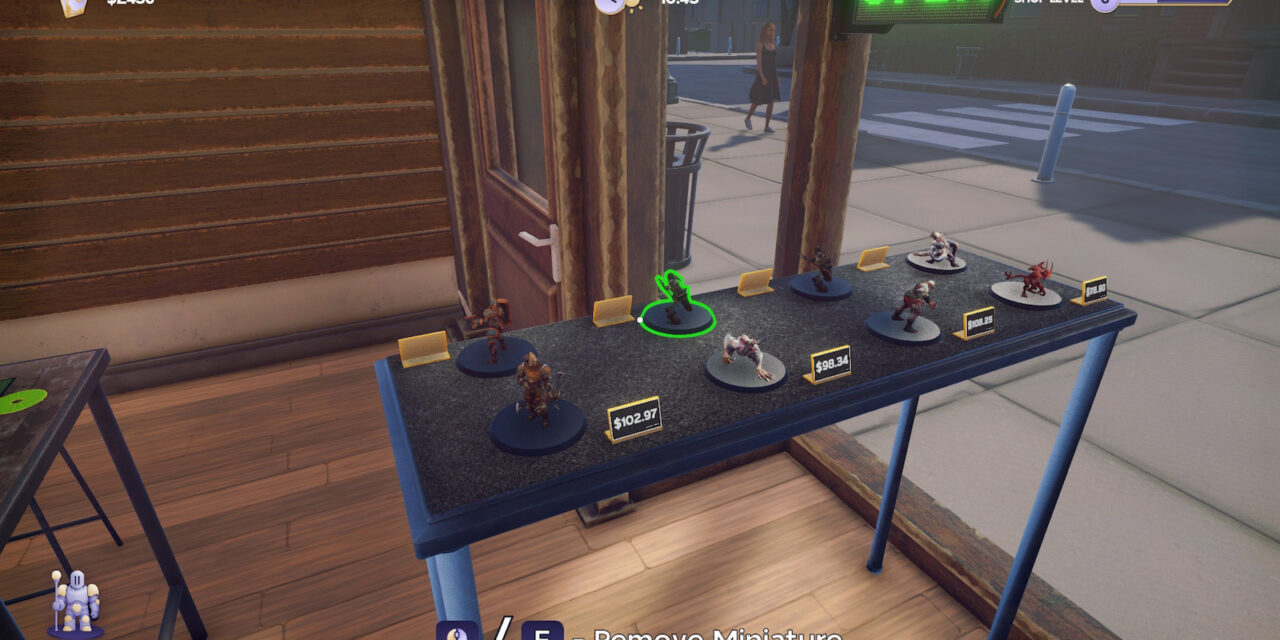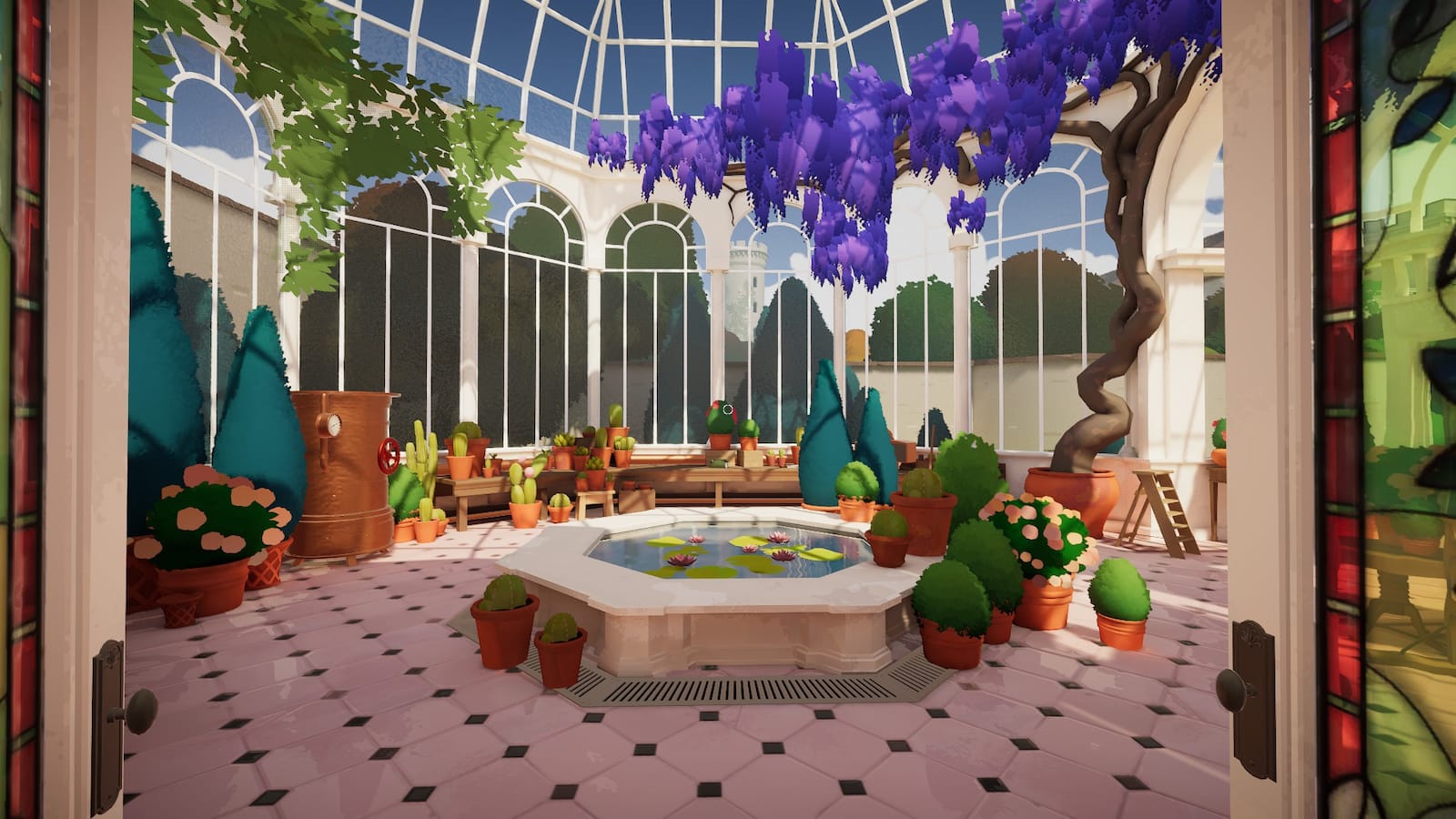You know the drill around here, we love a good simulator game, so when we got the chance to play the demo for Tabletop Game Shop Simulator, it was a no-brainer. Personally, I was interested in discovering how well it holds up to basic simulator games, but also other sims of this genre.
From what I was able to play in the demo, I feel like Tabletop Game Shop Simulator is going to be a great choice in adding to your simulator game library. Obviously, it has the same basic bones that they all do, but there were some things that made it stand out against the crowd.
You start in a small shop and slowly build your way up to a larger store. In this simulator, you’ll be selling staples like books, dice, figurines, paint, and more. This part is standard, but what I loved is that you’re able to easily set the market value and they were generally in whole numbers.
This is invaluable when you have games that require you to give change because dealing with pesky coins is the bane of my existence and in other games, the only way to combat that is to price whole numbers yourself that may end up being too expensive for customers or are sold at a loss for you.
I’ve seen a game simulator like this that had the unique advantage of letting you collect cards and Tabletop Game Shop Simulator brings something similarly unique. You can sell mini-fig blind boxes from various different sets and you can open them yourself. Since it’s a blind box, you’re only getting pieces and parts. You’ll need to open up a fair few boxes in order to assemble your first build.
Once you do, however, you have the option of selling it for a profit! If you want to give yourself an edge, you can place down a painting table. In doing so, you’ll be able to paint your miniature by playing a little mini-game that requires you to hit a circle that pops up before it disappears. The more circles you manage to click, the better the paint job.
If only painting mini-figs were as easy as clicking circles…

You’ll want to do this because that means you can sell it for a premium, or you can decide to keep the mini for yourself. You can put down a gaming table for customers, but it’s not just them that benefits. If you collect enough mini-figs, you can throw down with the patrons of your shop.
I’ll be honest, I tried this and it was probably the thing I liked least about this game. I love that it was an option, but it wasn’t for me. You’ll want to build up a team of five, which means, at a minimum, you have to complete five figs. However, you won’t be able to just throw all of them on a team and be done with it.
The figs have symbols attached to them to denote what kind of character they are and you can only have two types on your team. Additionally, you can’t have doubles. This means that you need five characters that are unique and that fit into two symbol types. It took me a while to do it, but once I did… I lost. I lost badly.
I’ll be honest, it kind of plays like Yahtzee. You have six dice that you toss and then you grab the symbols that you like to put in your lineup. Once you’ve grabbed what you like, you can roll the rest of them once and pull what you want from there. Your goal is to match the symbols to your characters for a bonus once they’re added up.
The best I could get was 125, which I thought was great until my opponent kept rolling over 300 on me. You play for three rounds and you either win or lose. I have no clue what happens if you win because I was nowhere close. This portion of the game kind of drags because you basically have to wait through a cutscene while your score is added up by the computer and then the opponent’s score is added up. It’s unskippable, so you just have to sit there and watch it.
I ended up deciding that my figs were better suited to just throw on a miniature selling table, where I could sell them for about $100 every time.
Watch the trailer for Tabletop Game Shop Simulator!
Even if you follow my path and you decide the mini game isn’t for you, I’d still encourage you to put down a gaming table because your customers will use it. When that and the painting table are in use, you’ll get a steady stream of money idling in. It’s only about 50 cents per person, but that adds up and it’s totally free.
I imagine that once you get leveled up enough to open up staff, you’ll be able to just putter around the shop restocking, but I don’t know what that looks like to report on it.
The only major flaw I found was at the register. The customers pay either by cash or card. With cash, you have to count out the change and I normally prefer when customers use a card because it’s just a simpler system. But that’s not the case here.
When someone decides to pay with a card, the camera forces a certain perspective that makes my motion sensitivity kick in. It’s like it pans the camera to the left to show you the price and then it pans back to the right when the transaction is done. So, I didn’t like that very much, but you do kind of get used to it.
All in all, I think Tabletop Game Shop Simulator is going to be a great game and even if you’ve got a simulator like it (like TCG Card Shop Simulator), I think this is different enough to warrant buying it when it releases.





